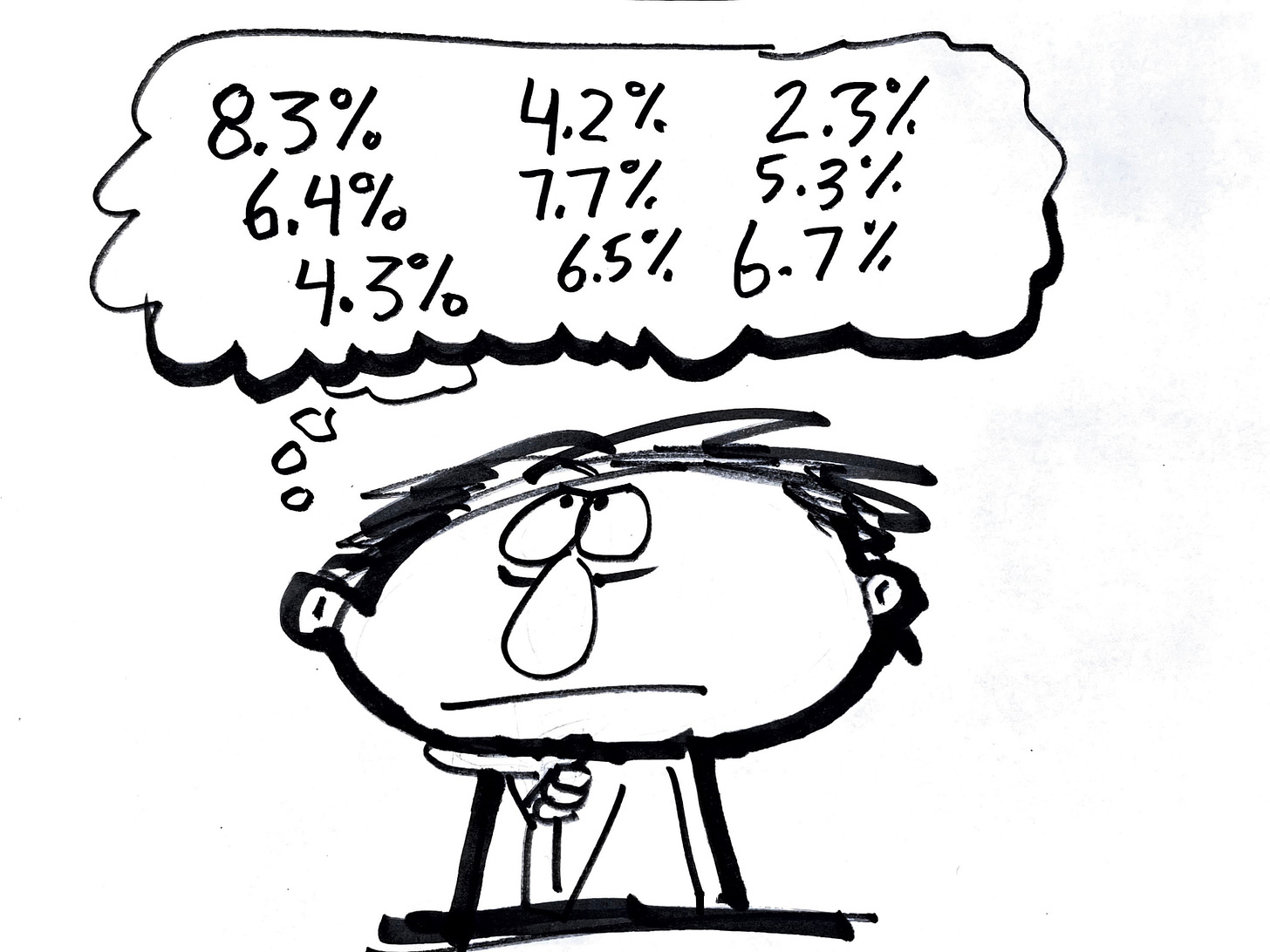One of my goals in this newsletter is to help you uncover the ways wealth and power shape public policy. Today, I’m going to focus on a topic that may seem wonky to you — but that’s exactly the point. Its very wonkiness disguises the power dynamic lying behind it.
The issue is how we measure the economy.
Start with the rate of inflation — how fast prices are rising. That number is now driving the Federal Reserve, our central bank, to raise interest rates — which in turn is causing mortgage and bank loans to soar, the dollar to reach new heights against foreign currencies, and the stock market to plunge. It is also likely to drive us into a recession.
That number is issued every month, from two places. Midway through the month, the Labor Department’s Bureau of Labor Statistics announces the consumer price index. Near the end of each month, the Commerce Department’s Bureau of Economic Analysis releases the Personal Consumption Expenditures Price Index.
The two measurements are done slightly differently, but the important point is they’re released every month, like clockwork.
Meanwhile, on the first Friday of each month, the Bureau of Labor Statistics tells us how many new jobs have been produced in the previous month and what’s happened to wages. (Economists and business columnists are already bracing for this Friday’s report, covering September’s jobs and wages.)
There you have it: Prices, jobs, and wages.
These are the three variables we learn about repeatedly because they are announced each month. The media repeat them, analyze them, frame stories around them. The three variables are used by policymakers at the Fed and in Congress and the White House. They’re viewed as the core criteria for how the economy is doing. In short, these three variables drive the national economic conversation.
But what about corporate profits?
There’s no monthly report on them.
Without a regular monthly report on profits, it’s been easy for the media and much of the economic establishment to ignore them — and ignore the record upsurge in corporate profits that occurred over the last two years (in a moment, I’ll tell you how we know about that). Every month we hear about inflation resulting from wages pushing up prices, but we don’t hear about record-high profits pushing up prices.
Why is there no report on profits? That answer is found in history — and in power.
As historian Eli Cook recounts, the first bureau of labor statistics in the United States was established on June 23, 1869 by the Massachusetts state legislature. It was supposed to collect data on jobs, wages, prices, and profits in that state.
But when the new bureau sent out a prepared questionnaire to business owners seeking information on their profits, not a single one was returned. The bureau then tried to estimate profits by publishing a report on the amount of money deposited by wealthy Bostonians in local savings banks. Boston elites went nuts. “Astonished at the audacity” of this “unspeakably mischievous” report, they made sure the bureau chiefs were fired in 1873.
The bureau chiefs were replaced by Carroll Wright, who soon went to Washington to head up a new federal agency then called the Bureau of Labor (eventually the Bureau of Labor Statistics) — and did so for the next twenty years. Wright devoted his life to comparing wage rates to cost-of-living indices as a way to measure what were then novel concepts such as “price levels” and “standards of living.”
Presumably, to avoid the minefield his predecessors in Massachusetts ran into, Wright never investigated profit rates.
And to this day, we know far less about profits than we do about prices, jobs, and wages.
As Cook points out, profits continue to be a neglected topic in economics. No Nobel Prize in Economics has ever been given to the study of profits, presumably because we know so little about them. Economists classify publications into many categories (the Journal of Economic Literature’s J3 code stands for “wages, compensation and labor costs”) but no category exists for profits. The last time The American Economic Review published an article with the word “profits” in the title was in 2014 (it was about the Japanese textile industry at the turn of the 20th century).
Carroll Wright’s Bureau of Labor Statistics is still going strong — one of the crown jewels of the federal government. But there is no comparable Bureau of Capital Statistics with the power to gather profit data from corporations.
(The Commerce Department’s Bureau of Economic Analysis does publish quarterly estimates of corporate profits but those estimates are based on samples of shareholder reports, IRS filings, and corporate income statements. They’re guesswork at best because corporations notoriously shift some profits to nations with lower tax rates, depreciate assets like crazy, low-ball profits when reporting to the IRS and exaggerate them when communicating with Wall Street, and use every accounting gimmick imaginable.)
So the only monthly, reliable reports we get are on prices, jobs, and wages.
If we measured corporate profits more often and more reliably, Americans might be getting a story about inflation centered not on workers’ power to get wage gains but on corporations’ power to get price gains. There might be far more discussion about what appear to be record profit margins and their effects on price increases across the land.
So rather than assume the Fed must hike interest rates to cool the economy by weakening workers’ purchasing power — lowering their wages and causing them to lose jobs — we might discuss ways to weaken corporations’ pricing power: such as windfall profits taxes, price controls, and tougher antitrust enforcement.
Never underestimate how certain measurements, issued regularly and reliably, frame the national debate. And always ask why these measures, and not others, are chosen.
For the answer, look to history — and power.
Please note: Subscribers to this newsletter are keeping it going. Thank you! I also appreciate you sharing this content with others and leaving your thoughts in the comments.













Share this post